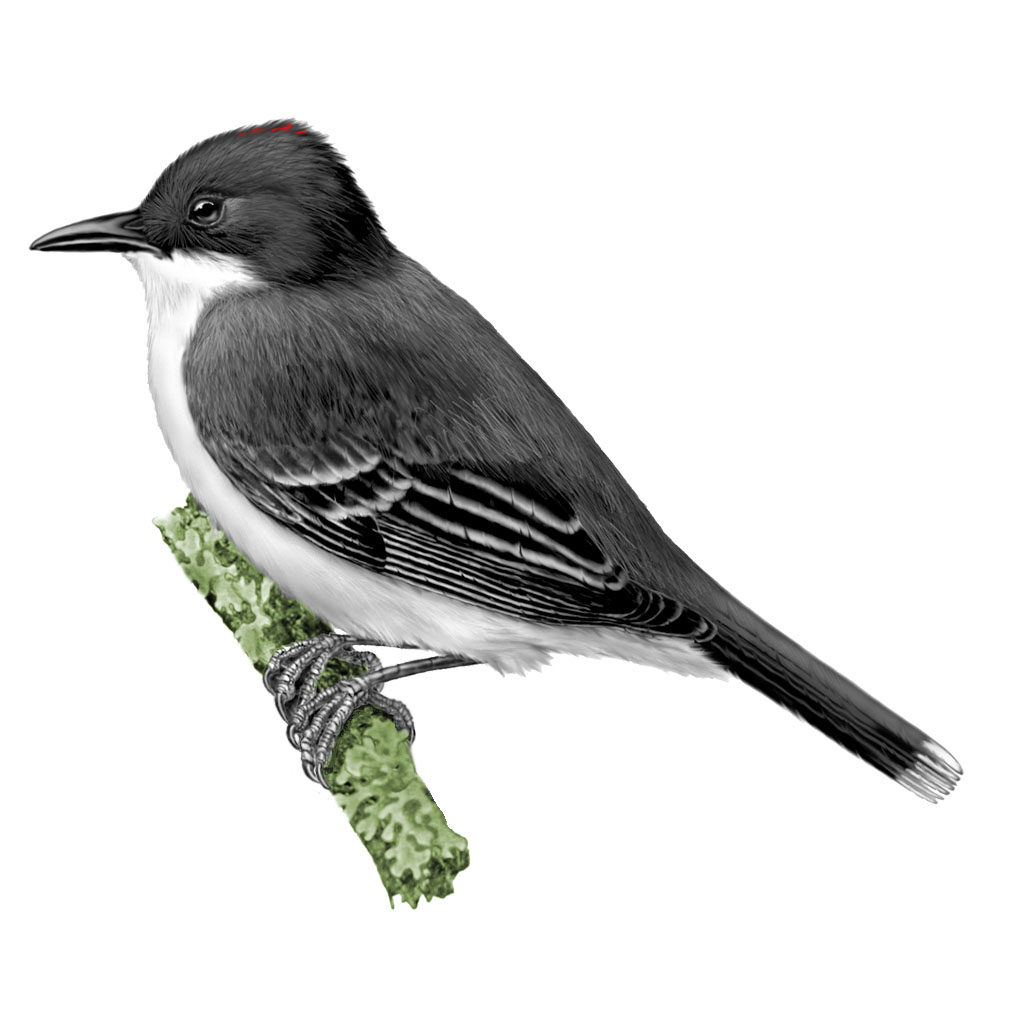Eastern Kingbird

With a name like Tyrannus tyrannus, you can be pretty sure this robin-sized flycatcher wouldn’t be a meek little tweety-bird. But it’s in the north where its tyrannical habits show up best, as it fiercely defends its nesting and flycatching territory, attacking trespassers with the help of its mate.
In Belize, Eastern Kingbirds are more likely to be seen in flocks of ten to sixty as they pass through on their way to Brazil in autumn, timing their arrival there to the fruiting season of Yagrumo Macho trees. Yagrumo is a South American name for “rainforest trees with palmate leaves,” and includes the cecropia which is common in Belize. But the fruit this flycatcher eats is probably that of the Umbrella tree, a Schefflera species. The flocks follow a nomadic route as the season progresses and the fruiting trees ripen across Brazil. In spring, Eastern Kingbird flocks return north to nest and raise young in the US and Canada, passing through Belize on the way.
The Eastern Kingbird is a crisply marked bird, bright white below, dark gray above blending to a black head, and with a squared-off, white-tipped tail. Although during migration it tends to eat mostly fruit, you may spot it flycatching from its perch on a dead branch or a fencepost or utility line like the more common Social Flycatcher or Great Kiskadee, with which you might confuse it momentarily since they have the same foraging habits and are closely related. But the Eastern Kingbird is a sharp black and white, while the others have brown bodies with a yellow breast and a broad white stripe above the eye.
If you are very lucky, you might see a flash of red in its cap if it has an altercation with another bird. Long crest feathers give the Eastern Kingbird a pointy-looking head when it is aroused, and if those feathers are standing up, look carefully for the red feathers they usually cover.
The best place to see an Eastern Kingbird in the Maya Mountain foothills is to keep an eye out for a flock while on the waterways, because they may perch on branches over water, flying with shallow, fluttery wingbeats as they dart out to snatch large flying insects. From out on the water is also a perfect place to see a flock eating berries, which they may pluck without landing. But watch in fruiting trees in the forest, as well, for flocks feeding on fruits.
There is good information here about Eastern Kingbirds and their song, a sharp, twittery call for the most part.